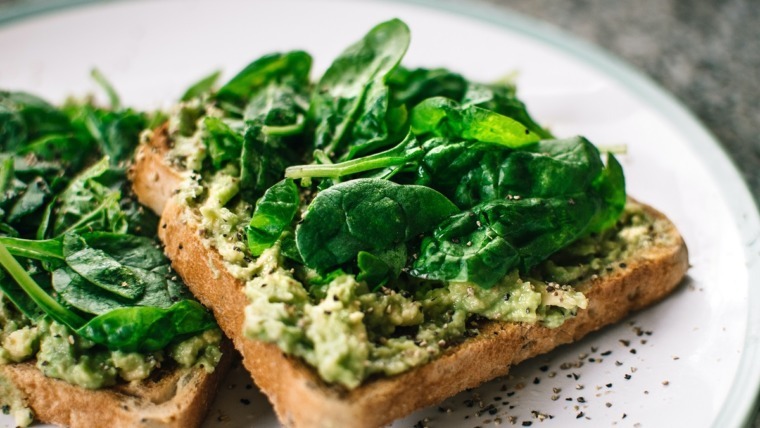
Written by Adriana Krueger
The organic food market is changing. Change and trends have always existed, but in the current, peculiar situation this change is faster and more evident. Hardly any other year has changed our consumer behaviour as much as 2020. We were forced to redefine our values and rethink our usual behaviour. We had to find out that our globalized food system has got some weak points and that home-cooked food tastes best after all.
The year 2020 was a year characterised by people working at home, empty supermarket shelves and a lot of time spent preparing meals.
Regional organic food is on the rise again
Already in the last few years the interest in organic fruit and vegetables from regional farmers has increased steadily and the pandemic has boosted this demand from consumers again significantly in the last year. Anyone who previously did their weekly shopping comfortably in the supermarket was looking for a way to escape the crowds during the crisis and preferred to shop using home delivery services or the corner store. Most of the time, these small companies get their goods from regional farmers and suppliers. In this way you not only get delicious produce and products, but also stimulate the local economy. We also know where the food comes from. Hence it tastes much better when animals benefit from the higher price and thus enjoy better living conditions. Organic products are more in demand than ever.
More time to yourself during lockdown makes people think and be more mindful of their own well-being and body. We can therefore certainly expect a greater demand for regional organic products in 2021.
Home-made meals or DIY - Food
Those who previously had little time to stand in front of the stove and prepare home-cooked meals were forced to changed behaviours last year. Closed restaurants, a lot of time at home and limited leisure activities prompted a large part of the population to use the cooking spoon themselves. The baking and cooking became an absolute highlight, which was reflected in the empty flour and pasta shelves in the supermarkets. A “hype” was triggered on social media, and to be honest, we all jumped on the bandwagon! From home-baked rolls to fettuccine carbonara – every recipe was an invitation to be copied.
People eagerly cooked and baked. Self-sufficiency has never been so much fun! There were no limits to creativity. “ Home-made” had become the new hobby in every household. I am sure that this trend will continue and that we can all look forward to many delicious, home-made meals this year again.
Meat Alternatives: Extraordinary Meat Blends
To the delight of our environment and animals, enthusiasm for vegan and vegetarian food will continue to grow. It is not just vegetarians who rely on plant-based food. Many people are increasingly reducing their meat consumption and prefer to choose quality meat that was raised with animal welfare. The market for meat alternatives has increased dramatically in the last 5 years. Classically, these are purely plant-based substitute products. In 2021 we can look forward to the so-called meat blends. These are refined mixtures of meat, vegetables and mushrooms. Mushrooms are a great addition to the diet for vegans and vegetarians. They are one of the few non-animal sources of vitamin D, and they also contain B vitamins and varying amounts of fibre and protein.
Pure Foods – the trend continues
The trend is to eat as “clean” as possible and do without additional flavour enhancers, artificial flavours and unnecessarily processed foods. Our diet should be pure, fresh and natural. Our food should be prepared fresh, gentle and healthily with the most natural ingredients possible, instead of eating artificial and ready-made foods. Regional organic foods are high in demand. A gentle and healthy preparation method is also important!
What initially were only related to food preparation now spills over into the beverage industry. More and more consumers want to do without additional sugar, artificial flavours and alcohol in their beverages. The trend now is for “Wellness-Drinks”, “Non-alcoholic cocktails” (mocktails) and drinks that promise relaxation. Drinks that have been enriched with healthy additives, such as aloe vera, medicinal herbs and the like are very popular. The favorite, however, is fortified mineral water with vitamins. The choice is limitless. The trigger for this development is the increasing need for better health. The right choice of drinks is part of a wholesome, healthy diet.
Biodynamic Wines:
We find these wines more and more frequently on the shelves. This won’t change in 2021 either. Organic wines avoid chemicals and pesticides during cultivation. The basic idea here is to see the farm as an organism in harmony with nature with the help of the cycle concept. The winemakers fertilize only with natural substances. This means a considerable additional amount of work of around 30%, which also has its price, but is definitely worth it in terms of taste.
Zero Food Waste – Food Waste Strategies
Zero Food Waste is a philosophy of life with a focus on avoiding waste and conserving resources and reusing them. The extension of life cycles and the redesign of work processes are just a few of the ways to get there. Waste prevention will be an important issue in 2021 that industries, restaurant chefs and the people at home are trying to fight with the help of modern technologies. One idea would be that retailers work with local restaurants and charity kitchens together to donate the leftovers of perishable foods. The leftovers could then be processed into delicious meals.
Sustainability has a pronounced influence on the food trends in 2021. It is increasingly important to consumers and suppliers that food does not harm nature or people. We are moving away from fast foods and life in the fast lane. Eating in 2021 can be fun again, should be culinary creative and bring us together.
The trend in 2021 The trend in 2021 The trend in 2021 The trend in 2021



